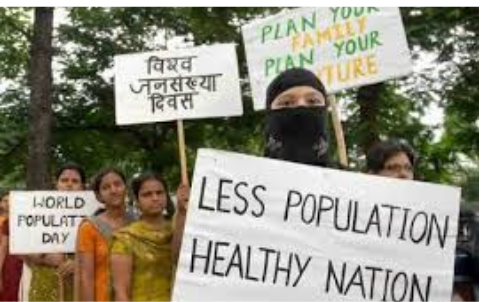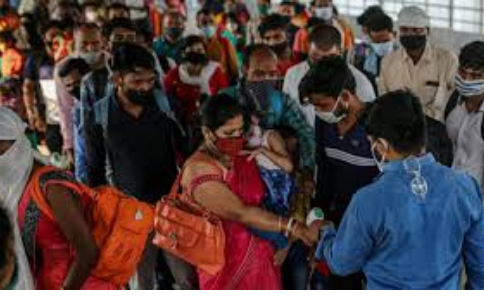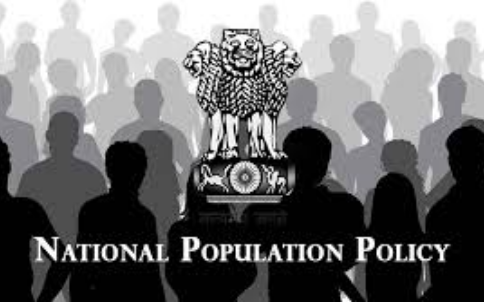To my article in Primepost on population policy last week, I received responses from different quarters, some disagreeing and some others wondering where the country is heading. Two even think that we should take harsh measures. One response is from Chicago from an old friend and founder of famous North-South Foundation in USA. While pointing that the problem is more of North, he wrote that “India utterly failed since Independence” in controlling population problem. That is what many others around the country also think. How true such perceptions are and what has been the scene?
Also read: Should a population policy be viewed more as “poll time threat” or “poll time promises”?
An independent analysis of developments over the decades and the kind of transition process that post-independence India had gone through initially, brings out that we have not made much difference in addressing the issue of population despite having a population policy, a first in the world. But at the same time it is obvious that in a matter of three generations the very outlook of people about family size has changed and even the total fertility rate of the country has declined to expected level except in a couple of states and there too decline has set in to the extent that, even without drastic curbs or coercion, it would reach 2.1 TFR level much sooner.
Also read: Can we expect a “New India” without reforming polls and parties?
India recognised at the very outset the desirability of population planning. And also took up a series of measures such a way that basic socio economic development considerations were taken up which in turn were expected to prompt people to realise and understand the necessity of regulating family size as a part of better quality of life. However, on many of these the country has not made the kind of difference that was expected. It all adds up, in my assessment, that our development plans have not yielded the expected outcomes. On the contrary, inequalities have increased, insecurity perceptions have increased, even education levels among women in certain regions are disappointing and access to health services has been disgusting.
Also read: With pandemics foreseen beyond Covid viral phases, don’t we want to build immunity levels?
It is not failure of a population policy or program as it is of the development model and governance system in vogue. It is these which are responsible for the overall direction of economic and social development. These in turn depend on the kind of representatives at the helm in the legislatures. And it is on involvement of people that governance depends. It also determines the kind of implementation mechanisms that are at work. To add to that is failure of political leaders to come together and view population as a priority concern. And yet, against such a background, drastic decline in pop growth cannot be denied.

Without strengthening the trajectory of development, democracy and governance, population stabilisation remains a distant dream, even with a range of incentives and harsh disincentives. Going by the sustainable development report of NITI Ayog for 2020-21, Assam and UP are in the bottom five states, Kerala and Himachal figure on the top three. This was what the concerned Minister told the parliament last week. The indicators for this assessment include level of Poverty, nutrition, health protection, literacy, education etc. it is these factors which matter for wife-husband adopting family planning.
Also read: Do we have an agenda for the country or is it better that we do not have any such pretensions?
It was this connectivity or linkage between socio-economic development and demographic trends in the country that eminent demographer Dr Ashish Bose tried to explain. To effectively sensitise the policy makers Dr Bose came up with acrimony BIMARU. In a presentation in 1984 to the then Prime Minister, Rajiv Gandhi, Bose conveyed that demographic problem is because of poverty and governance in some states, population growth continues to be higher. He referred to Bihar, Madhya Pradesh, Uttar Pradesh and Rajasthan specifically. Ashish was a friend of mine for over a decade and he and I were on the National Committee on Population. I adopted ever since his strategy of not confuse with statistics when the observation or finding is powerful. Much before his death in 2014, he had acknowledged that Madhya Pradesh, Rajasthan and even Orissa had shown a momentum, but UP and Bihar were still not showing visible difference both in terms of development and demographic indicators. He travelled extensively in these states before coming up with BIMARU idea.
Also read: PK’s mantras and methods as an outsourced poll strategist
In no other state as many studies and experiments were conducted in the context of health and family planning as in UP. Thirty-five years ago the US had funded a special project to intensify family planning programme in Uttar Pradesh. It aimed to intensify health services and their reliability by strengthening PHCs and sub centres and doubling medical and para medical staff. It geared up access to contraceptives and revived sterilisation programme which suffered a setback in UP during 1975-77. With change in the government, that US sponsored project disappeared without any appraisal. Sustainable Development Goals have become the priority at the instance of NITI Ayog.

Even a more significant aspect never debated and recognised is that population is human resource and that we have not explored or channelled their potential. The focus has been more to impose disincentives and continue incentives for two child norm. Even as a parallel initiative we have not explored and harnessed people as resource by taking beyond “jobs” view. Or, by giving doles and making people dependent like for example giving one lac rupees dole to families on marriage of their girl. Mass mobilisation for tasks like massive projects like building bridges, planting trees, maintaining forests, taking entrepreneurship with locally available resources, spreading literacy, skills,etc.
Also read: Are we consolidating or destabilizing primary education?
Political leaders tend to look at population growth as an alibi for failures to do with development and governance. It is their taking vote-bank politics where numbers matter for control and command that the problem lacked sustained efforts. The pop policy is much larger issue than contraceptives, sterilisation and incentives and disincentives. It needs to be viewed beyond prism of poll prospects and “vote bank politics”. And it calls for a larger debate and political leaders coming together. We should thank UP government for reminding this “off and on” view of a chronic phenomenon.
Also read: What Anandayya of Andhra Pradesh has done many can do in India
In my view it is time that political parties take this population issue in their poll manifesto more directly. I consider that population issue is linked to seven different phenomena. In a nutshell these are 1) Accelerate technology in different ways should be a priority to prompt entrepreneurship, 2) a rethink on simple-majority-based elections, 3) reconsider solo view of peoples representation, 4) stop making people dependents and pamper passive citizenry, 5) stop promoting greed based lifestyles, 6) take critical view of job centric education system, and 7) stop prompting rat race with socalled competitive criteria thereby denigrating majority people as unproductive or inferior. We should explore “democratic dividend” idea more than being preoccupied with “demographic divides”.
Also read: Prashant Kishor should be thanked for the “PK phenomenon”?!
………….
(Dr. N BhaskaraRao is New Delhi based analyst of public policies with over fifty years standing).




